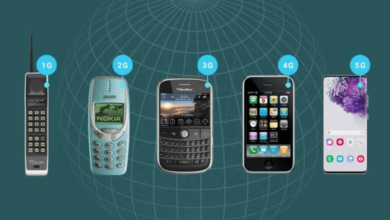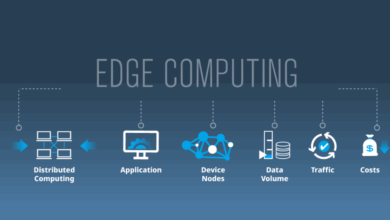What vMVPD Means for Virtual Pay TV Services

The television industry has witnessed a seismic shift with the advent of virtual Multichannel Video Programming Distributors (vMVPDs), a modern evolution of traditional pay TV. Unlike conventional MVPDs, which rely on cable or satellite infrastructure, vMVPDs deliver multi-channel video content over the internet, blending the curated channel experience of traditional TV with the flexibility of streaming. Services like YouTube TV, Hulu + Live TV, and Sling TV exemplify this model, offering live TV and on-demand content without the need for physical hardware. This article explores the significance of vMVPDs, their operational mechanics, and their transformative impact on the virtual pay TV landscape.
Redefining Pay TV for the Digital Era
vMVPDs represent a fusion of traditional television’s channel-based structure and the internet’s on-demand accessibility. By leveraging broadband connections, these services deliver live TV channels—ranging from news and sports to entertainment—directly to devices like smart TVs, smartphones, or tablets. This eliminates the need for coaxial cables, satellite dishes, or set-top boxes, aligning with the cord-cutting trend that prioritizes flexibility and convenience.For instance, a subscriber to YouTube TV can access live broadcasts from networks like ABC, ESPN, or CNN, mirroring the experience of a traditional MVPD like Comcast, but through an app-based interface. This shift democratizes access to multi-channel programming, allowing viewers to engage with pay TV without long-term contracts or specialized equipment. By bridging the gap between linear TV and streaming, vMVPDs redefine what pay TV means in a digital-first world.
Operational Framework and Accessibility
The operational model of vMVPDs hinges on cloud-based delivery and licensing agreements with content providers. Similar to traditional MVPDs, vMVPDs negotiate carriage fees to secure rights to broadcast networks, ensuring a robust channel lineup. However, their reliance on internet infrastructure reduces operational costs compared to maintaining physical networks, enabling competitive pricing. For example, Sling TV offers packages starting at $40 per month, significantly lower than many cable subscriptions.Accessibility is a hallmark of vMVPDs, as they support a wide range of devices and platforms. A viewer can watch a live football game on a laptop, switch to a smartphone during a commute, or stream on a smart TV at home, all with a single subscription. This cross-device compatibility caters to modern lifestyles, where mobility and flexibility are paramount. Additionally, features like cloud DVRs and on-demand libraries enhance the viewing experience, allowing users to record shows or access content at their convenience.
See also: Leveraging Technology for Digital Marketing Success 3899298226
Consumer Appeal and Market Growth
The rise of vMVPDs reflects evolving consumer preferences, particularly among younger audiences who value affordability and choice. Industry data suggests that vMVPD subscriptions have grown steadily, with services like Hulu + Live TV and YouTube TV collectively serving millions of U.S. households by 2025. This growth is driven by the model’s ability to offer live TV without the high costs or contractual obligations of traditional MVPDs.vMVPDs appeal to cord-cutters who still desire the live TV experience—such as watching sports or news—but prefer the flexibility of streaming. For example, a sports fan can subscribe to FuboTV for its extensive sports channel lineup without committing to a cable provider’s broader, more expensive package. This targeted approach allows vMVPDs to capture niche audiences while competing with both traditional pay TV and standalone streaming services like Netflix.
Technological Advantages and Challenges
The technological backbone of vMVPDs lies in cloud-based streaming and adaptive bitrate technologies, which ensure smooth playback across varying internet speeds. Unlike traditional MVPDs, which rely on dedicated infrastructure, vMVPDs leverage existing broadband networks, reducing setup costs and enabling rapid scalability. For instance, Philo, a vMVPD focused on entertainment channels, can quickly expand its offerings by adding new networks to its cloud platform without physical upgrades.However, this reliance on internet connectivity introduces challenges. Inconsistent broadband speeds or network congestion can lead to buffering or reduced video quality, particularly during live events with high viewership. To mitigate this, vMVPDs invest in content delivery networks (CDNs) and partnerships with internet service providers to optimize streaming performance. Additionally, robust cybersecurity measures, such as encryption and DRM, protect content and user data, ensuring a secure viewing experience.
Competitive Positioning in the Media Landscape
vMVPDs occupy a unique niche, blending the strengths of traditional MVPDs and OTT streaming platforms. Unlike standalone streaming services, which focus on on-demand content, vMVPDs offer live TV, making them a direct competitor to cable and satellite providers. Yet, their internet-based delivery and lack of hardware requirements align them with the flexibility of services like Netflix or Amazon Prime Video.This hybrid positioning allows vMVPDs to appeal to diverse audiences. For instance, a household seeking live news and sports might choose YouTube TV, while one focused on entertainment could opt for Philo’s lower-cost, channel-specific package. By offering customizable plans—often with add-ons for premium networks like HBO or Showtime—vMVPDs provide a tailored alternative to the one-size-fits-all bundles of traditional pay TV, while maintaining the live TV appeal that standalone streamers often lack.
Economic Implications for Content Creators
vMVPDs play a pivotal role in the media ecosystem by channeling revenue to content creators through carriage fees, similar to traditional MVPDs. These fees support the production of high-quality programming, from live sports to scripted series, ensuring a steady flow of content. However, vMVPDs’ lower operational costs allow them to offer competitive pricing, which can pressure traditional MVPDs to reduce fees or innovate.For content creators, vMVPDs provide an additional distribution channel, expanding their reach to audiences who have cut the cord. A network like ESPN benefits from inclusion in YouTube TV’s lineup, reaching viewers who might not subscribe to cable but still want live sports. This dynamic fosters a mutually beneficial relationship, as vMVPDs rely on compelling content to attract subscribers, while networks gain exposure to a growing digital audience.
Regulatory and Market Dynamics
Unlike traditional MVPDs, which operate under strict FCC regulations, vMVPDs face lighter oversight, as they are classified as internet-based services rather than broadcast providers. This regulatory flexibility allows them to experiment with pricing, channel offerings, and features without the constraints of carriage mandates or pricing transparency rules. However, debates around net neutrality and bandwidth prioritization could impact vMVPD performance, particularly during high-traffic periods.In the competitive landscape, vMVPDs must differentiate themselves from both traditional MVPDs and standalone streaming platforms. Services like Hulu + Live TV leverage their parent companies’ content libraries—Disney’s catalog, in Hulu’s case—to offer a blend of live and on-demand programming. Others, like Sling TV, focus on affordability and customization, allowing users to select channel packages that suit their needs. These strategies highlight vMVPDs’ adaptability in a crowded market.
Future Potential and Industry Evolution
As consumer demand for flexible, affordable TV options grows, vMVPDs are well-positioned to shape the future of pay TV. Emerging technologies, such as 5G networks, promise to enhance streaming quality, reducing latency and enabling seamless live broadcasts. Artificial intelligence could further personalize channel recommendations, making vMVPDs even more user-centric.Moreover, vMVPDs are expanding into new content areas, such as live events and niche programming, to capture diverse audiences. For example, FuboTV’s focus on sports includes international leagues and specialty channels, appealing to global viewers. As traditional MVPDs lose subscribers to cord-cutting, vMVPDs are likely to gain market share, potentially redefining pay TV as a primarily virtual service.
Driving the Future of Virtual Pay TV
vMVPDs represent a transformative force in the pay TV landscape, offering a compelling alternative to traditional MVPDs and standalone streaming platforms. By combining the live, multi-channel experience of pay TV with the flexibility and affordability of internet-based delivery, they cater to modern viewers’ desire for choice and convenience. Their technological agility, competitive pricing, and ability to support content creators position them as a vital component of the evolving media ecosystem. As vMVPDs continue to innovate and adapt, they are poised to redefine virtual pay TV, ensuring that multi-channel programming remains accessible, relevant, and engaging for audiences worldwide.





